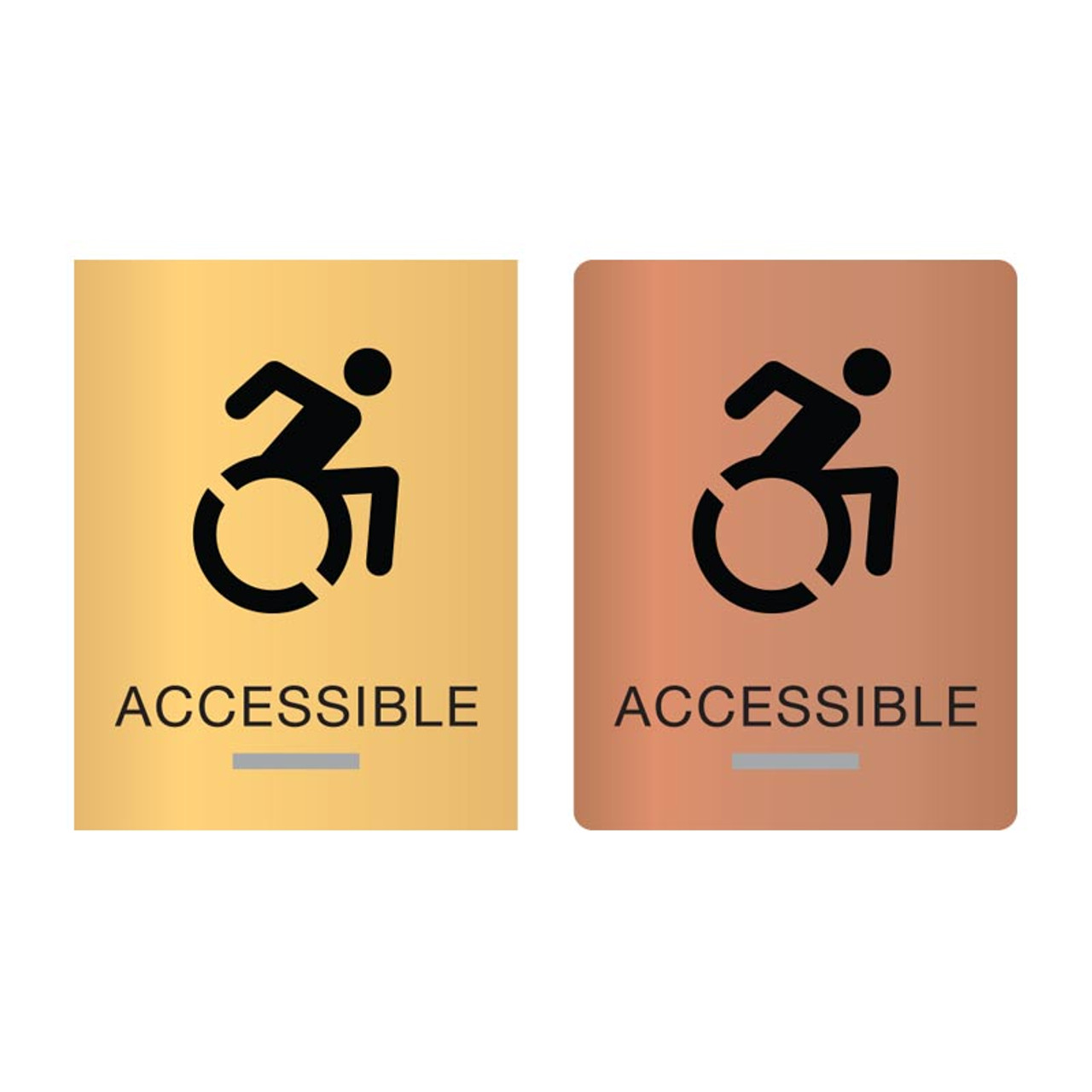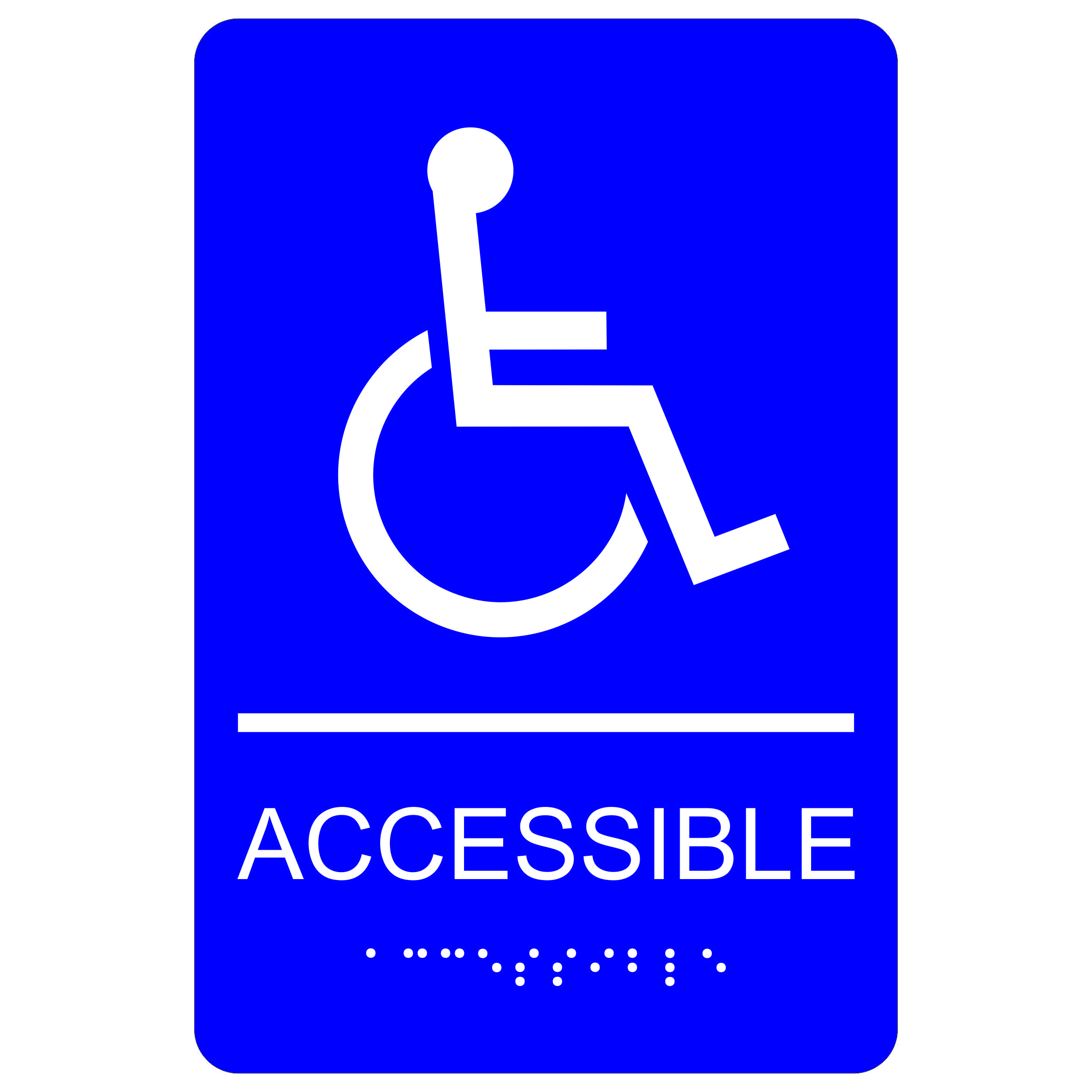Exploring Imaginative Designs for Efficient ADA Signs
Exploring Imaginative Designs for Efficient ADA Signs
Blog Article
Checking Out the Secret Features of ADA Signs for Improved Access
In the world of ease of access, ADA signs serve as silent yet effective allies, ensuring that spaces are navigable and inclusive for people with impairments. By integrating Braille and tactile aspects, these indicators break obstacles for the aesthetically impaired, while high-contrast shade schemes and clear font styles cater to diverse aesthetic needs.
Significance of ADA Conformity
Making sure compliance with the Americans with Disabilities Act (ADA) is important for fostering inclusivity and equivalent accessibility in public areas and work environments. The ADA, enacted in 1990, mandates that all public facilities, employers, and transport solutions fit people with handicaps, guaranteeing they delight in the very same rights and opportunities as others. Compliance with ADA requirements not just satisfies lawful commitments however also boosts a company's track record by demonstrating its commitment to variety and inclusivity.
One of the essential aspects of ADA conformity is the implementation of accessible signs. ADA indications are created to make sure that individuals with handicaps can quickly browse with spaces and buildings. These indicators should abide by specific guidelines regarding dimension, font style, shade comparison, and placement to ensure presence and readability for all. Correctly implemented ADA signs aids eliminate obstacles that people with handicaps usually encounter, thereby advertising their freedom and confidence (ADA Signs).
In addition, adhering to ADA regulations can alleviate the risk of potential penalties and lawful repercussions. Organizations that fall short to abide by ADA guidelines may deal with suits or charges, which can be both monetarily burdensome and harmful to their public image. Therefore, ADA conformity is integral to promoting an equitable atmosphere for everybody.
Braille and Tactile Components
The incorporation of Braille and responsive aspects into ADA signage personifies the principles of accessibility and inclusivity. It is typically positioned beneath the corresponding text on signage to guarantee that individuals can access the information without aesthetic help.
Responsive components expand beyond Braille and include increased characters and icons. These elements are developed to be noticeable by touch, allowing individuals to determine area numbers, toilets, exits, and various other essential locations. The ADA sets certain guidelines concerning the dimension, spacing, and positioning of these responsive aspects to enhance readability and make certain consistency throughout different atmospheres.

High-Contrast Color Pattern
High-contrast color design play a critical duty in improving the visibility and readability of ADA signage for people with aesthetic disabilities. These schemes are important as they maximize the difference in light reflectance in between text and history, making sure that indicators are quickly noticeable, even from a distance. The Americans with Disabilities Act (ADA) mandates using particular color contrasts to accommodate those with minimal vision, making it an essential element of conformity.
The efficacy of high-contrast colors hinges on their capacity to stand apart in numerous lights problems, including dimly lit settings and areas with glow. Commonly, dark text on a light history or light message on a dark background is employed to attain optimal comparison. For example, black text on a yellow or white background gives a stark visual distinction that assists in quick recognition and comprehension.

Legible Fonts and Text Dimension
When considering the design of ADA signs, the option of legible typefaces and appropriate text dimension can not be overemphasized. The Americans with Disabilities Act (ADA) mandates that typefaces must be not italic and sans-serif, oblique, manuscript, very attractive, or of uncommon kind.
According to ADA standards, the minimal message height must be 5/8 inch, and it needs to increase proportionally with checking out distance. Uniformity in message size contributes to a natural visual experience, helping people in navigating atmospheres successfully.
Furthermore, spacing between letters and lines is important to readability. Ample spacing prevents personalities from showing up crowded, enhancing readability. By sticking to these requirements, designers can substantially boost accessibility, making sure that signage serves its desired objective for all people, no matter of their visual capabilities.
Efficient Positioning Strategies
Strategic positioning of ADA signs is vital for taking full advantage of access and guaranteeing conformity with lawful criteria. ADA standards state that indications must be mounted at an elevation between 48 to 60 inches from the ground to ensure they are within the line of sight for both find this standing and seated more individuals.
Furthermore, signs need to be put nearby to the lock side of doors to permit simple identification before entry. Uniformity in indicator positioning throughout a facility enhances predictability, lowering confusion and enhancing total user experience.

Final Thought
ADA indications play an important duty in advertising availability by incorporating functions that attend to the requirements of people with specials needs. Incorporating Braille and tactile aspects makes certain critical information is easily accessible to the visually impaired, while high-contrast shade systems and understandable sans-serif font styles improve visibility across numerous lighting conditions. Effective positioning techniques, such as proper mounting heights and tactical areas, better promote navigation. These components collectively promote an inclusive atmosphere, underscoring the value of ADA compliance in ensuring equivalent accessibility for all.
In the realm right here of access, ADA indicators serve as silent yet effective allies, guaranteeing that areas are comprehensive and navigable for individuals with handicaps. The ADA, established in 1990, mandates that all public facilities, companies, and transportation solutions suit individuals with specials needs, ensuring they delight in the same legal rights and possibilities as others. ADA Signs. ADA signs are created to make sure that individuals with specials needs can quickly navigate through rooms and structures. ADA guidelines specify that signs must be mounted at a height between 48 to 60 inches from the ground to ensure they are within the line of sight for both standing and seated individuals.ADA indicators play a crucial role in advertising access by incorporating features that resolve the needs of people with specials needs
Report this page